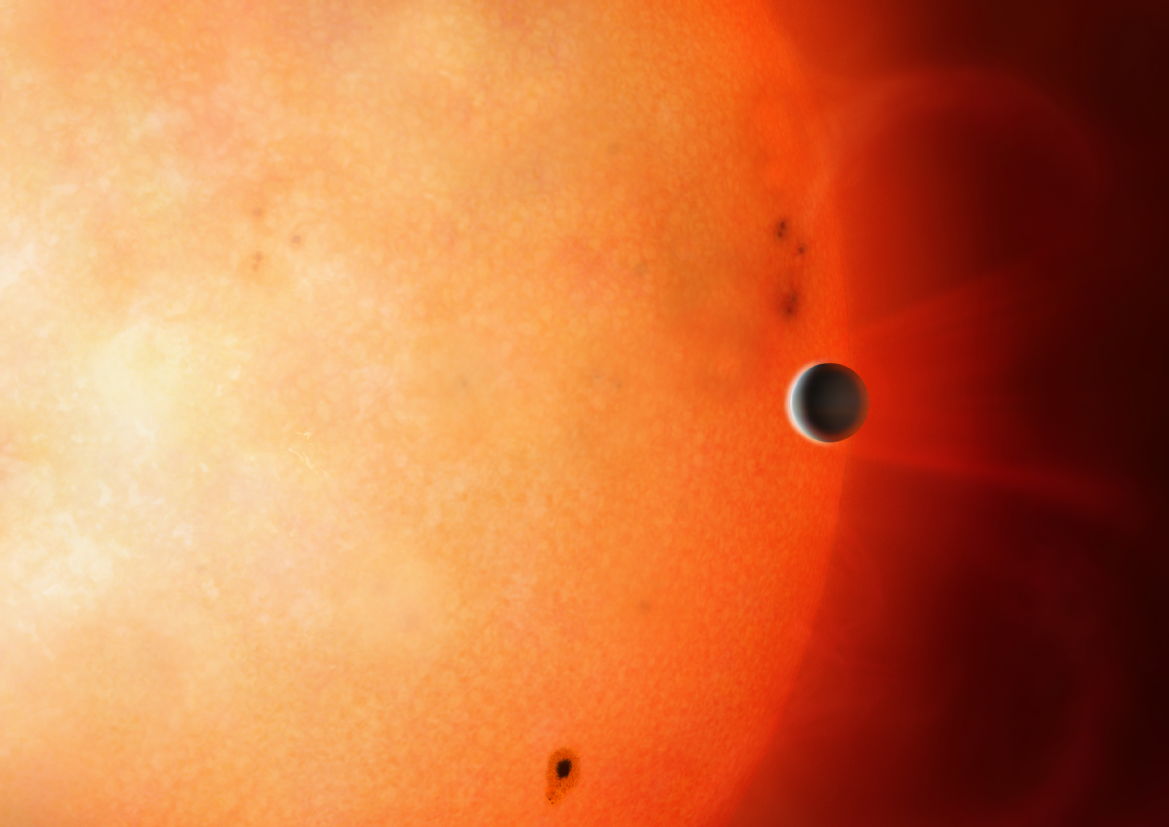
29 May SAAO 1.0m Telescope pivotal in the discovery of a ‘Forbidden’ Planet in the ‘Neptunian Desert’
The South African Astronomical Observatory’s 1.0m telescope provided crucial follow-up observations in new research published today by members of the Astronomy and Astrophysics Group at the University of Warwick, UK, detailing the discovery of an exoplanet in the so-called “Neptunian Desert”.

The planet NGTS-4b, also nick-named ‘The Forbidden Planet’ by researchers is about 20 times the mass of the Earth and about 3 times the size. The planet orbits its host star in just 1.3 days with temperatures exceeding 1000 degrees Celsius.
NGTS-4b was first noticed using the state-of-the-art Next-Generation Transit Survey (NGTS) observing facility, designed to search for transiting planets on bright stars. NGTS is situated at the European Southern Observatory’s Paranal Observatory in the heart of the Atacama Desert, Chile.
The discovery relied heavily on follow-up observations made by Dr Matt Burleigh (University of Leicester) using the Sutherland High-speed Optical Cameras (SHOC) on the SAAO 1.0m Telescope in November 2017. This triggered an international effort to obtain further observations and a few weeks later it was confirmed that the transit was indeed a sub-Neptune exoplanet.
When looking for new planets astronomers look for a dip in the light of a star – this is the planet orbiting it and blocking the light. Usually, only dips of greater than 1% are picked up by ground-based searches, but the NGTS telescopes can pick up a dip of just 0.1%. With a dip almost that small, this exoplanet is, by a long way, the shallowest transiting planet ever discovered by a ground-based survey (the transit is less than 0.2%).
Dr Burleigh explained “Since this transit is so shallow, NGTS-4b wasn’t initially one of our top priority targets. But thanks to the excellent telescopes at SAAO in Sutherland, we were able to detect and confirm the transit, convincing ourselves the planet is real. We then set in motion many more observations to measure its mass and size.”
It is the first exoplanet of its kind to have been found in the Neptunian Desert, which is the region close to stars where, up until now, no Neptune-sized planets have been found. This area receives strong irradiation from the star, meaning the planets do not retain their gaseous atmosphere as they evaporate leaving just a rocky core. However, NGTS-4b still has its atmosphere of gas leading researchers to believe the planet may have moved into the Neptunian Desert recently, in the last
one million years or that it was originally very big and the atmosphere is still evaporating.
High-res image available at https://warwick.ac.uk/services/communications/medialibrary/images/may2019/exoplanet_ngts-4b_-_v4.jpg
The full paper at https://academic.oup.com/mnras/advance-article/doi/10.1093/mnras/stz1084/5475662
